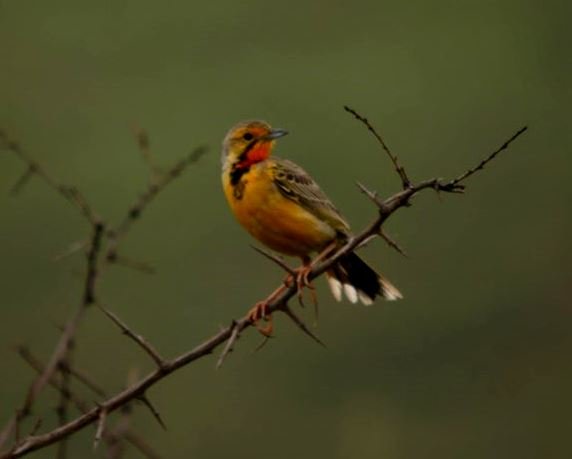Orangethroated longclaw

Author: Ivan Lätti
Photographer: Eric Aspeling
The orangethroated longclaw, in Afrikaans the oranjekeelkalkoentjie (little orange throated turkey) and scientifically Macronyx capensis, is a small passerine bird of southern Africa often found in short grassland and seasonally wet vlei areas.
Passerine birds are distinguished by having feet adapted for perching. All songbirds are passerines, in fact more than half of all birds are. Three toes point forward, one back on each foot and there is no webbing. They have specialised leg muscles, a tendon at the back of the leg that tightens when the leg bends. This causes the foot to curl and tighten when landing on a branch, gripping it. Passerines can sleep on a branch without falling off. Most passerines hop instead of walk.
The orangethroated longclaw is found along the south coast and the eastern part of South Africa, usually operating in pairs. They walk with big steps in the grass or on open ground. Their search for food, seeds and insects, partly conducted in flight, includes both scratching the ground or termite tunnels and hawking insects in the air.
They build bulky grass nests, line them with roots and usually lay three white or cream eggs with brown spots. The eggs incubate in nearly two weeks, nestling taking only a little longer than that (Maclean, 1993; Wikipedia).

